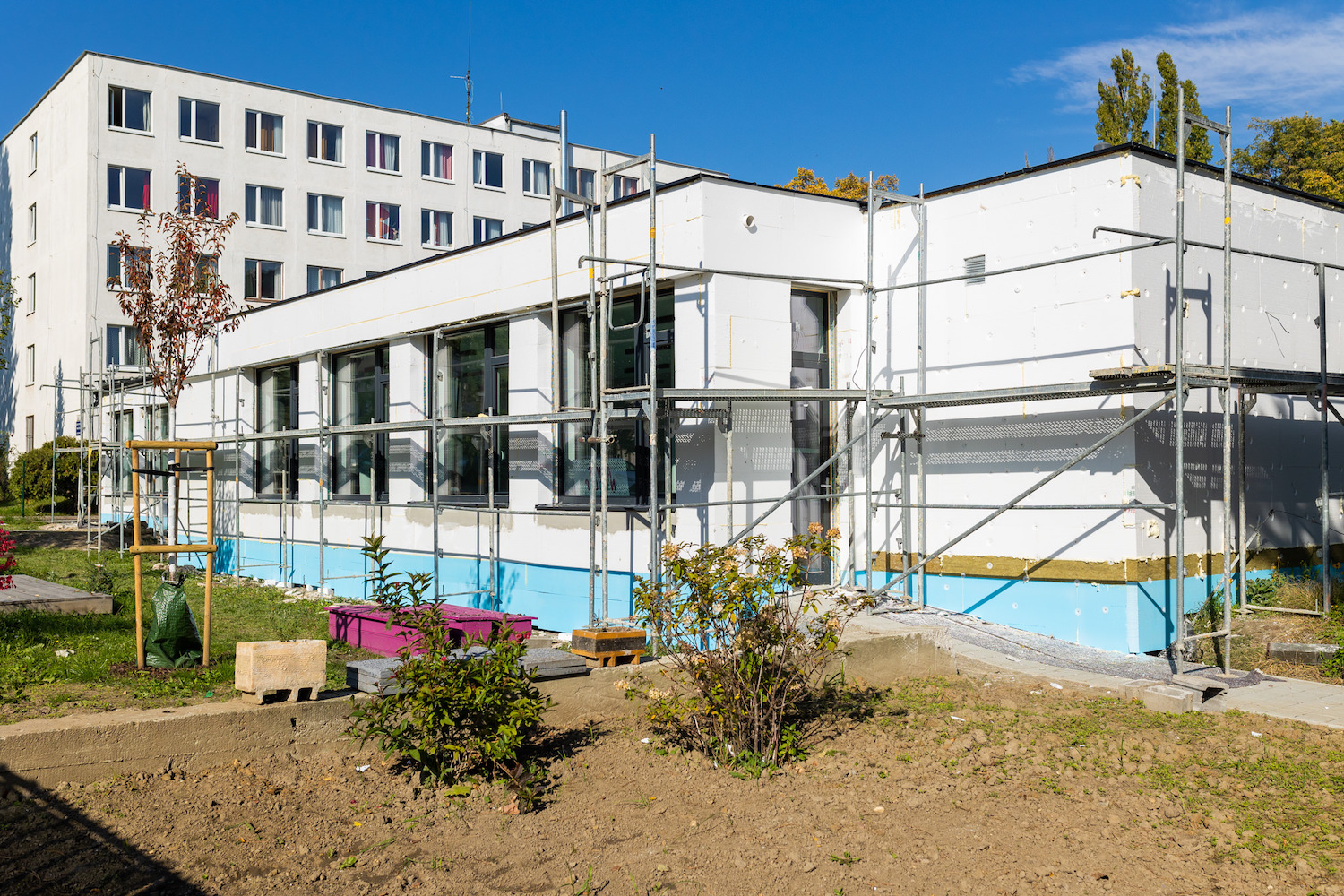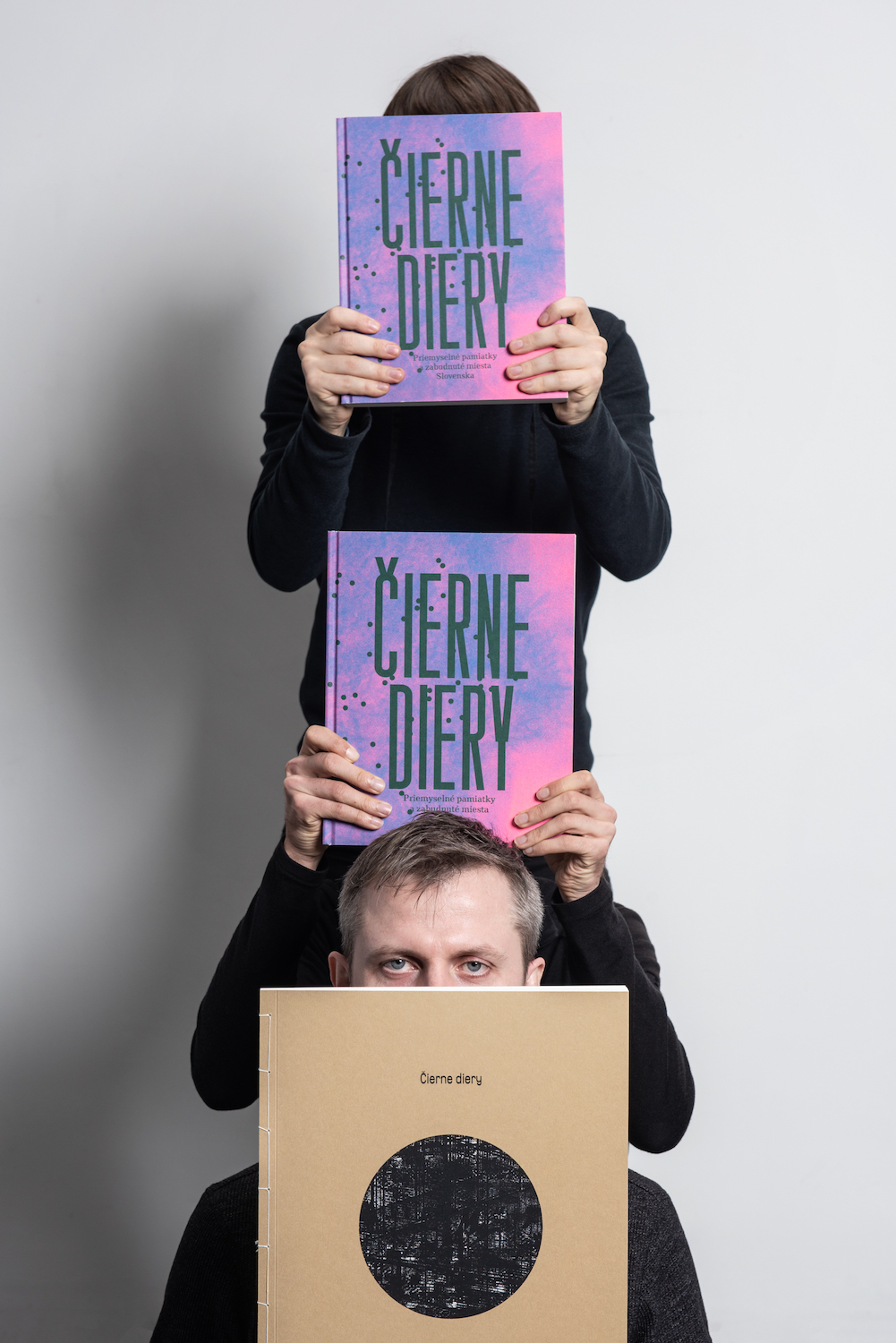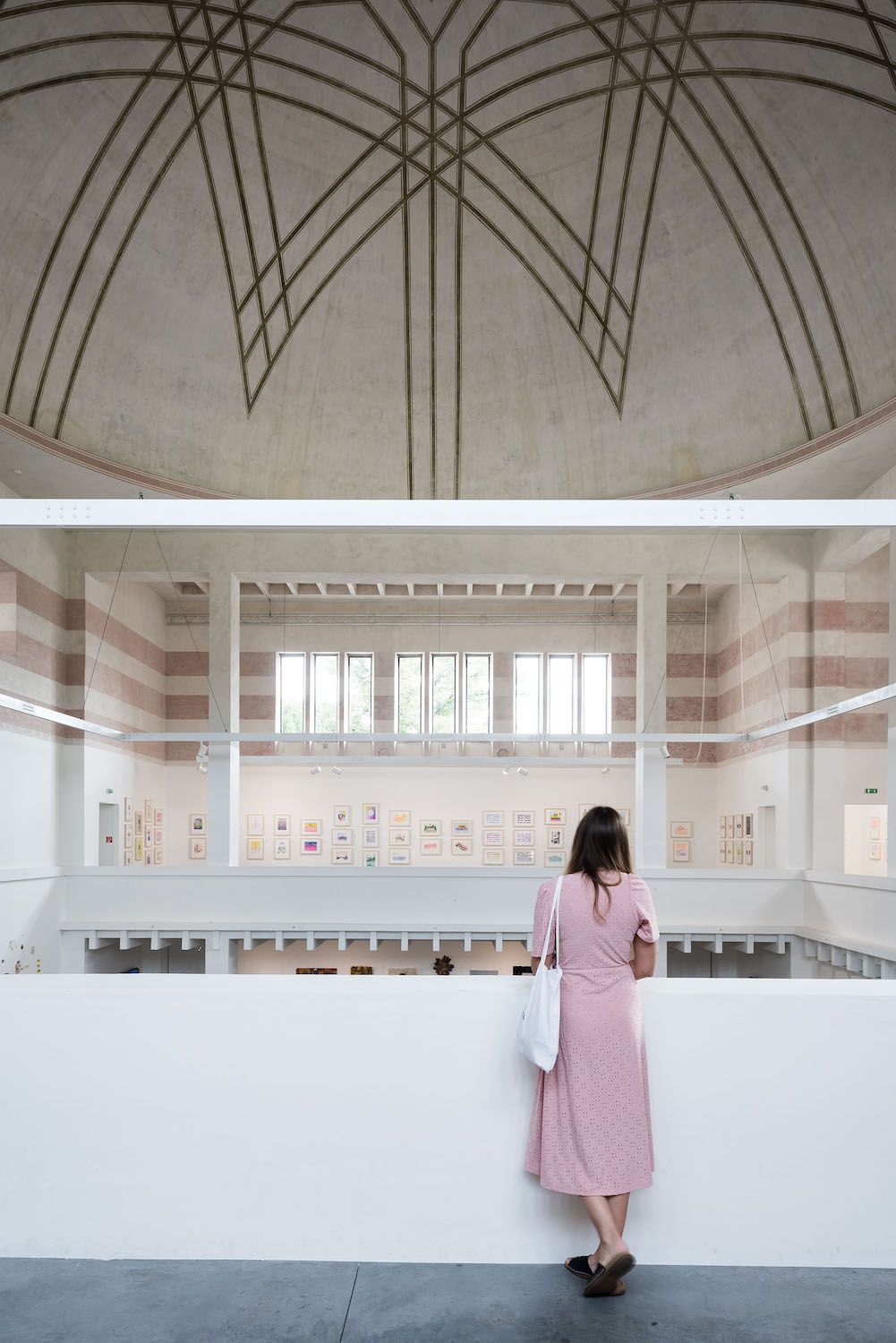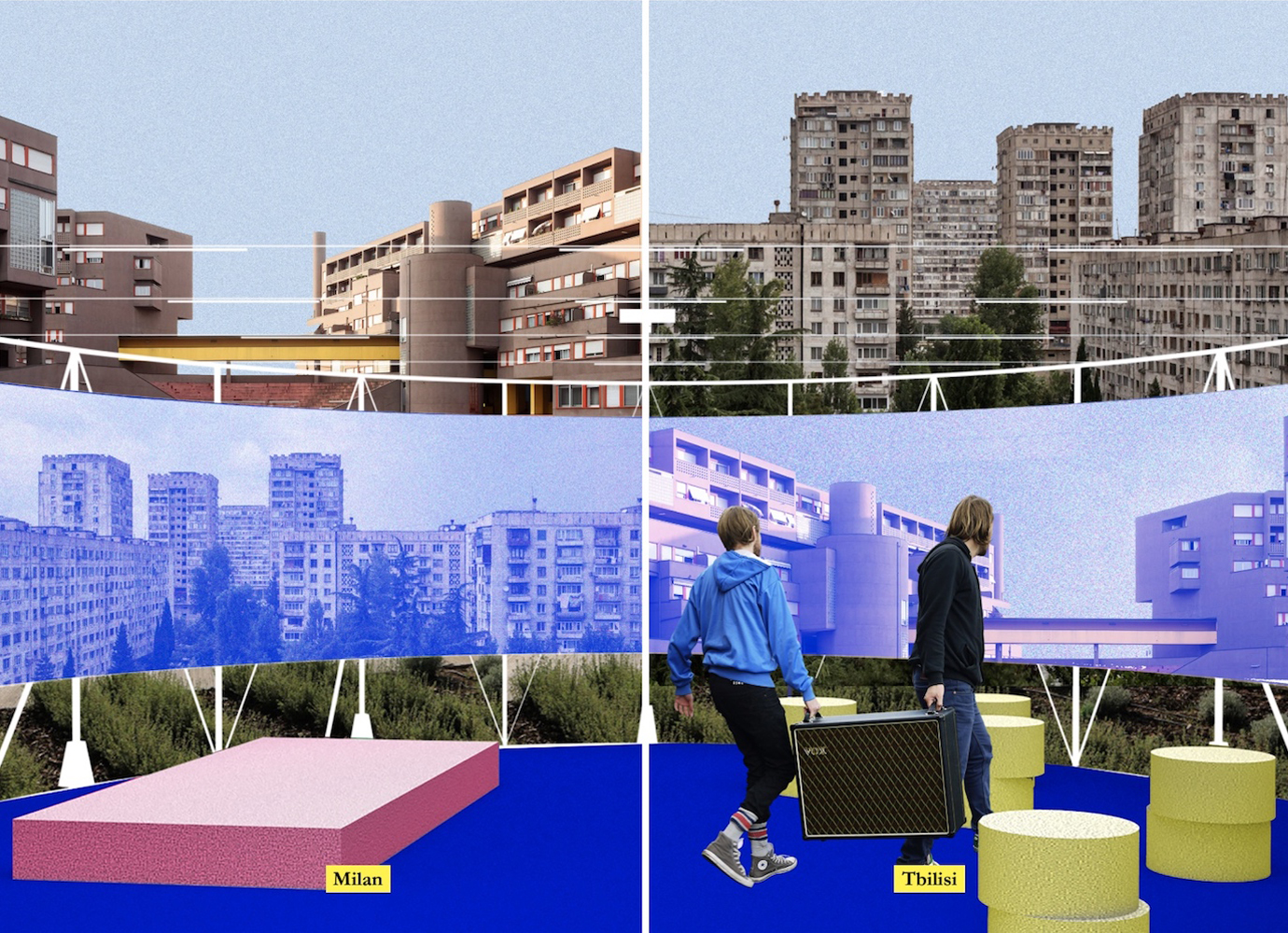How Slovakia’s urban activists are transforming Bratislava from the ground up
Bratislava’s streets have been moulded, then neglected by a string of successive governments and ideologies. Now, a newly-emboldened generation of activists are taking matters into their own hands, with a wave of grassroots projects designed to make the city better for the people who live there.
Strolling through Bratislava on any given day, it can be hard to grasp the city’s elusive character. Despite its small size, travellers and newcomers tend to remark on the Slovak capital’s motley collection of architectural styles, where concrete and glass blocks sit next to monarchy-era housefronts. The city’s medieval castle towers over streets that churn with pastel-pink baroque palaces, steel-framed monoliths left behind by socialist Czechoslovakia, and the rounded edges of newly-erected residential towers.
Today’s urban landscape is not a coincidence. Bratislava is a city that, for a long time, lacked coherent planning. Instead, the capital was designed by finite historical eras, turning its streets into a labyrinth of long-faded visions. Once a transcultural and multilingual city at the heart of the Habsburg empire, two World Wars and growing Czechoslovak (and later Slovak) nationalism saw the city’s Hungarian, Jewish and German communities expelled and deported one-by-one. In their place, a new, socialist generation of Czech architects began to shape Bratislava. Factories and brutalist high-rise apartment blocks sprouted up across the city where, decades before, ornate buildings had stood, symbolising the power of the elite.
A view over Bratislava. Image: Martin Katler/Unsplash under a CC licence
Yet when Czechoslovakia’s socialist dream also failed, Bratislava’s urban fabric was again ripped apart by turbo-charged 90s capitalism. Mismatched luxury high-rises shot up on the outskirts of the city, even as historical buildings fell into disrepair. As ever more space was commercialised, inhabitants found they were left with llittle room for their lives to unfold. Later regeneration plans were often well thought-out, but failed to be properly executed. Bratislava, it seemed, was eating itself whole.
Then, a few years ago, a growing number of grassroots urbanists started taking things into their own hands. Bratislava’s younger generations are both increasingly conscious of the cityscape and confident enough to reclaim it. From independent art spaces like the already-legendary Nová Cvernovka to a growing cyclist lobby at home in Cyklokuchyňa (“bike kitchen”), Bratislavans have fixed up historic buildings, created their own community spaces, mapped architectural gems in disrepair and, more recently, elected a fellow urban activist as mayor.
One of these new developments is Stará Jedáleň (“the old canteen”), an inconspicuous one-story building in the residential area of Rača. Its boxy, white exterior is still covered by scaffolding and waiting for insulation, but once inside, brightly-lit rooms with hardwood floors and a squeaky-clean kitchen stocked with tea and coffee await. Formerly the canteen building for the adjacent high school, the space had been unused and run-down for years before a group of residents living nearby joined forced to turn it into a community centre.
A low-threshold multifunctional space where anyone from the community can offer anything from yoga or cooking sessions to political debates, theatre workshops and concerts, Stará Jedáleň has become something of a neighbourhood hub. “The sense of community, the dynamic was already there. [Before,] we’d work out and bake together, but always in someone’s kitchen,” says Anna Karako, Stará Jedáleň’s programme manager. And, despite a long period of Covid-related restrictions coming into force just weeks after the centre’s initial opening in 2020, people have taken to their new neighbourhood venue. Even Bratislava mayor Matúš Vallo has played a benefit concert here with his band.
Community spirit hasn’t guaranteed a smooth ride, however. “Building the space is one thing, but running it is a whole other challenge,” says Karako. “Someone needs to clean it; we can’t give everyone a key, and tasks need to be split.” So far, things have mostly worked out. “The best moments are when people come here, everything runs smoothly, and they visibly feel at home here. That’s when I think: this is why we’re doing this.”
A teambuilding session at Stará Jedáleň
While the abandoned canteen was a lucky find for the community in Rača, infrastructure in disrepair is no rarity in Bratislava. Often, it is found where most only see blank spots on the map.
In 2014, the aptly-named collective Čierne Diery (or “black holes”) began to chart these abandoned places — not only in the capital, but all over Slovakia. Their work inspired a Čierne Diery map which charted the country’s otherwise unnoticed places, highlighting their stories.
The friends behind the group — marketing professional Martin Lipták, graphic and typographic designer Michal Tornyai, urbanist Lívia Gažová, journalist Andrej Sarvaš, historian Lukáš Patera and architect Miroslav Beňák — were especially interested in industrial architecture. But they were astounded at the poor condition that many of Slovakia’s buildings were in, and at how inaccessible their stories were. They started collecting photos, documents, and any other information they could lay their hands on, to map these urban “black holes” nationwide, from centuries-old factories and run-down spas, to icons of modernist architecture.
“We get word about interesting buildings in historic locations from all over, really. We collect old books and maps, but people often approach us with information, and we also collaborate with conservationists,” explains Martin Lipták. “In some regions of Slovakia, intriguing places catch our eye while we’re on the road and we look them up later on.”
The map quickly caught on as a collaborative project, but Čierne Diery’s success is largely thanks to their art production. Working with artists from all around Slovakia, the collective started publishing risograph prints in 2015, with each artwork focusing on the buildings they championed. The team made a conscious decision to keep the prints at the affordable price of just 25 euro — and thousands of people have stood in line to buy them. In 2020, the entire series was added to the Slovak National Gallery collection.
“People used to pass by the run-down buildings without noticing them. At times, they even wished for their demolition. Now those same buildings are proudly on display in their living rooms,” says Lipták. “Some collectors even started dabbling in art themselves once they had bought paintings, prints or ceramics from renowned artists. It’s great. The art world seems inaccessible to many, and a little exposure has inspired them to take the leap.”
The Slovak Radio Building in Bratislava, illustrated by Marek Menke for Čierne Diery
As these architectural ‘black holes’ became increasingly obvious throughout the 2010s, ordinary Slovaks became more keen to see them filled in. And where government responses have been slow, people have risen to the occasion. In the last decade alone, grassroots collectives and NGOs have used fundraisers and public grants to restore two renaissance-era houses in the city’s Old Town – one of them now houses a café, the other serves as an art venue – and to revive the Old Market Hall, which now once again hosts markets, book exchanges, festivals and conferences.
Stará Jedáleň’s Anna Karako says she isn’t surprised that local people are taking up the fight. Her generation, she explains, has the time, financial stability and freedom to shape its urban surroundings. Many young Slovaks have been inspired by experiences abroad; there’s a zest for action and financial support from private companies which older generations never experienced.
You can feel this urbanist zeal in Petržalka, famous for its colourful high-rise apartment blocks on the south bank of the Danube. The neighbourhood was designed from scratch by socialist planners with a never-built metro as its main artery. Today, Petržalka has the highest population density in all of Bratislava. While its lush green spaces and its proximity to Austria have pushed rent upwards, it still reflects the unfinished utopian visions from the 60s, most notably in its road layout: the neighbourhood’s ground level was designed for cars, whereas pedestrian space was reserved for elevated terraces.
Today, the existing terraces are isolated pieces of an unfinished whole, and many are crumbling. While some are cheaply leased to art spaces such as Hotdock and Photoport, in many cases the city’s hands are tied. The privatisation wave of the 90s saw many of the shops below and apartments above change hands, while the terraces themselves were often left without official ownership; on paper, many seem not to exist. Legally, the city can only intervene when the buildings deteriorate to a life-threatening degree.
The issue caught the attention of Lucia Adameková, Viktor Kasala and Ján Urban, decided to intervene while studying architecture and urban studies at the Slovak University of Technology in Bratislava. As the newly-founded collective Krásy Terasy (“terrace beauties”), they collected funds, applied for city grants and talked to residents and owners of the adjacent buildings to spruce up two terrace sections on Mánesovo Square and in front of the Petržalka district library.
Volunteers working with Krásy Terasy
Krásy Teasy proceeded to build wooden seating, raised plant beds and makeshift pergolas for the terraces. They worked in a joint effort with local residents, putting on weekly crafting sessions every Saturday. The project was not an easy task: the residents’ visions and opinions differed vastly, finances and the terrace load capacity were limited, and legal hurdles threw regular spanners into the works. For one, if legal ownership of a particular terraces does exist, then it is often divided between multiple stakeholders. Regulations require consent from every single legal owner before renovations can begin, and leave little wiggle room as to what can actually be done in terms of work.
“Things are moving slowly, but they’re moving forward. Especially because people are joining the Saturday work sessions, they seem pleased that something is being done about the terraces. They give us hope that the whole project isn’t in vain,” Lucia Adameková sums up.
Yet for all the work accomplished, these projects are still mere scratches on the surface of a larger urban problem. One sentiment echoes across all of these citizen collectives: “If architectural heritage were on the agenda of our authorities, public administration, or the private sector, we wouldn’t have to put in the effort,” says Martin Lipták. “But now that we’ve started, we’re trying to do a good job and change the public view with our activities. Naturally, this will never solve the issues at hand, but it can open up questions, point in certain directions or inspire people.”
On an official level, it seems as if change in Bratislava could be afoot at last, as mayor Matúš Vallo gradually places his own footprint on the city. The former activist and architect has been tackling urban issues such as parking policy, outdated public transit infrastructure, property tax, and the shape of public spaces, since he took office in 2018. Some of the more tangible changes his team has made include making parking spots more expensive for non-residents, redesigning public spaces in a more pedestrian-friendly and barrier-free way, and adding greenery to the historically car-centered city.
It’s the first time since Slovakia’s independence that a mayoral team has taken such a comprehensive, heads-on and inclusive approach to planning Bratislava’s future. And aside from granting financial support, it has begun to complement the work thus far often left to activists and NGOs.
“The public administration has started picking up the work activists have been doing before. This is basically the ideal case – when people have been pushing for something and it gets pushed further in the political sphere, that’s when things really start happening,” say Adameková and Kasala. Like everywhere, some like to moan about any kind of change. But in general, once people see a finished project, they tend to embrace it, the two explain. “Next year the mayoral election is coming up again. That should bring to light how well received the recent developments really are.”

.jpg)






